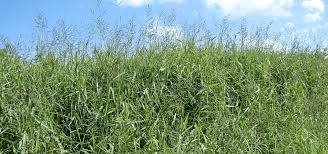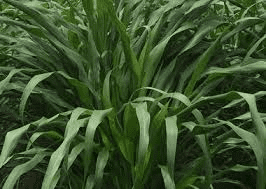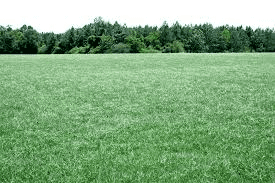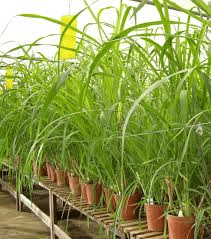Grasses are one of the most widespread plant types on Earth, and they play a vital role in maintaining soil health. Their ability to grow in different environments, from lawns and parks to farms and wild landscapes, makes them important for both agriculture and environmental sustainability.
Beyond their aesthetic appeal, grasses contribute significantly to soil fertility, water retention, and ecosystem stability. Understanding the connection between grasses and soil health can help in creating sustainable farming practices, improving landscapes, and preventing land degradation.
Role of Grasses in Preventing Soil Erosion
Soil erosion happens when wind, water, or human activities remove the top layer of soil, which contains the most nutrients. Grasses are crucial in preventing this process because they act as a protective cover over the soil. Here’s how they help:
1. Ground Cover: Grasses form a dense mat over the soil surface, protecting it from the direct impact of rainfall and wind. Without grasses, rainwater can wash away the soil, especially during heavy storms, leading to erosion. By covering the soil, grasses reduce the force with which water hits the ground and slows down the runoff, minimizing the risk of soil being washed away.
2. Root Network
Grass roots create a dense underground network that binds the soil together. This root system holds soil particles in place, making it more resistant to erosion. Even when heavy rains come or winds blow, the soil remains stable because the grass roots keep it intact. This is especially important on slopes or areas prone to erosion, where the risk of soil loss is higher.
3. Reduced Water Runoff
Grasses help absorb water through their roots, which reduces water runoff. When there’s less runoff, more water soaks into the ground, replenishing the soil’s moisture and preventing erosion. This is beneficial in areas that receive a lot of rainfall, as it allows the water to stay in the soil instead of washing away essential nutrients.
How Grasses Improve Soil Structure

Soil structure refers to the way soil particles are arranged and held together. Good soil structure is important for plant growth because it affects water drainage, root penetration, and air circulation within the soil. Grasses contribute significantly to improving soil structure in several ways:
1. Root Penetration and Soil Porosity
Grass roots penetrate deep into the soil, creating spaces or pores between soil particles. These pores allow water and air to move more freely through the soil. Proper drainage helps prevent waterlogging, which can harm plants, while better aeration encourages healthy root growth and microbial activity.
2. Aggregation of Soil Particles
Grass roots secrete substances that help bind soil particles together into aggregates. These aggregates improve soil stability and make it easier for water to move through the soil without causing erosion. Aggregated soil also makes it easier for plants to take up nutrients and for beneficial microorganisms to thrive.
3. Prevention of Soil Compaction
Soil compaction occurs when the soil becomes too dense, often due to heavy machinery or foot traffic. Compacted soil reduces water infiltration and root growth. Grasses, with their extensive root systems, naturally break up compacted soil, creating more space for air and water. This leads to healthier soil and better plant growth.
Nutrient Cycling and Organic Matter Contribution by Grasses
Grasses play a vital role in nutrient cycling, the process by which nutrients are exchanged between the soil, plants, and the environment. They also contribute to the buildup of organic matter in the soil, which is essential for maintaining soil fertility. Here’s how grasses help with nutrient cycling and organic matter:
1. Decomposition of Grass Residue
When grasses die or are cut, their roots, leaves, and stems decompose, adding organic matter back into the soil. This organic matter improves soil fertility by providing nutrients like nitrogen, phosphorus, and potassium that are essential for plant growth. The continuous cycle of growth, decay, and nutrient release helps maintain soil health over time.
2. Nutrient Uptake and Recycling
Grasses take up nutrients from the soil to support their growth. When grasses are harvested or grazed by animals, some of these nutrients are returned to the soil through waste products or when plant material is left behind to decompose. This recycling of nutrients ensures that the soil remains fertile and able to support further plant growth.
3. Increased Microbial Activity
The organic matter contributed by grasses creates a favorable environment for soil microorganisms like bacteria and fungi. These microorganisms help break down organic material into simpler forms that plants can use. By supporting microbial life, grasses promote a healthy soil ecosystem that continually cycles nutrients and enhances soil fertility.
4. Improved Soil Carbon Content
Organic matter from grasses helps increase the soil’s carbon content, which improves soil structure, water retention, and nutrient availability. Soil rich in organic carbon can hold more moisture and nutrients, making it more productive and resilient to changes in climate.
Read Also: Importance of a Sick Bay in a Ruminant House
Grass Root Systems and Their Impact on Soil Stability

The root system of grasses is one of their most important features when it comes to maintaining soil stability. Here’s how grass roots impact soil stability:
1. Deep and Extensive Root Networks
Grass roots vary in depth, with some species having shallow roots while others penetrate deep into the soil. This extensive root network stabilizes the soil by physically holding it together. Deep roots, in particular, are beneficial because they reach down into subsoil layers, making the entire soil profile more stable and less prone to erosion.
2. Improved Water Infiltration
Grass roots create channels in the soil that allow water to infiltrate deeply. This prevents water from pooling on the surface, which can lead to erosion or surface runoff. By improving water infiltration, grass roots help keep the soil moist and reduce the chances of topsoil being washed away during heavy rains.
3. Soil Retention in Sloped Areas
In areas with slopes or uneven terrain, grass root systems are essential for preventing landslides and soil erosion. The roots anchor the soil in place, especially during heavy rainfall or when the soil is saturated. Without grasses, slopes are at risk of losing their soil, which can lead to long-term land degradation.
4. Protection Against Wind Erosion
Grass root systems are also effective in protecting the soil from wind erosion, especially in dry and windy regions. The roots bind soil particles together, making it harder for the wind to blow them away. This is particularly useful in open fields or plains where wind can easily erode unprotected soil.
Grasses as a Natural Barrier Against Water and Wind Erosion
Grasses act as a natural defense system against both water and wind erosion, helping to preserve soil and protect ecosystems. They are widely used in various landscapes to prevent the degradation of land caused by these forces.
1. Protection Against Water Erosion
Water erosion occurs when rain or flowing water displaces soil. This problem is especially common on sloped lands and areas with poor vegetation cover.
Grasses help prevent this by slowing down the speed at which water moves across the surface. Their roots create a protective barrier that holds soil particles in place.
i. Ground Cover: The thick layer of grass reduces the impact of falling rain, preventing soil from being washed away.
ii. Water Absorption: Grass roots absorb water, reducing surface runoff and allowing more water to percolate into the soil.
iii. Slope Stabilization: On slopes, grasses are crucial for holding soil in place and preventing landslides.
2. Defense Against Wind Erosion
Wind erosion is a major problem in dry, windy regions where soil is exposed. Without vegetation to protect it, wind can blow away loose soil particles, leading to loss of topsoil. Grasses provide the necessary cover to prevent this.
i. Windbreak: The dense foliage of grasses slows down wind speed at the soil surface, reducing the wind’s ability to pick up soil.
ii. Root Binding: Grass roots anchor soil particles, preventing them from being lifted by the wind, especially in arid regions and open plains.
The Importance of Grasses in Sustainable Land Management
Grasses play a critical role in sustainable land management, which focuses on maintaining the health of soil, water, and ecosystems over time. By using grasses in land management practices, we can improve soil health, protect biodiversity, and maintain ecosystem services that are essential for agriculture and natural habitats.
1. Soil Conservation
Grasses are a key tool in preventing soil degradation. When used in conjunction with other sustainable practices like crop rotation and reduced tillage, grasses can greatly improve the quality of the soil.
i. Preventing Erosion: As mentioned, grasses prevent soil erosion, a major cause of land degradation.
ii. Improving Soil Fertility: By adding organic matter through their decay and promoting microbial activity, grasses help keep soils fertile.
2. Water Management
Grasses can help manage water resources more efficiently by improving water infiltration into the soil and reducing runoff. This not only prevents erosion but also helps recharge groundwater supplies.
i. Water Retention: Grasses enhance the soil’s ability to hold water, which is beneficial for plants and helps mitigate the effects of drought.
ii. Flood Prevention: In areas prone to flooding, grasses reduce surface runoff and slow water flow, preventing floods and reducing damage to the land.
3. Biodiversity Support
Grasslands are habitats for a wide range of plant and animal species. By maintaining grass cover, sustainable land management promotes biodiversity and supports the ecological balance of an area.
i. Habitat Creation: Grasses provide food and shelter for many animals, including birds, insects, and small mammals.
ii. Plant Diversity: Different grass species support different types of plant life, enriching the biodiversity of a given landscape.
Read Also: Stocking Management for Ruminant Animals
Best Grass Species for Soil Health and Erosion Control

Selecting the right grass species is essential for maximizing soil health and preventing erosion. Below are some of the best grasses suited for different environments and purposes.
1. Bermuda Grass (Cynodon dactylon)
Bermuda grass is a warm-season grass known for its extensive root system and fast growth. It is excellent for controlling soil erosion, particularly in warm climates.
i. Ideal for: Sloped areas, lawns, and regions prone to erosion.
ii. Benefits: Rapid growth, drought tolerance, and strong root system that binds soil effectively.
2. Ryegrass (Lolium spp.)
Ryegrass is widely used in erosion control because of its rapid establishment and ability to thrive in cool climates. It provides excellent ground cover and prevents both wind and water erosion.
i. Ideal for: Cool climates, pastures, and areas needing quick soil stabilization.
ii. Benefits: Fast-growing, prevents erosion effectively in both waterlogged and dry conditions.
3. Buffalo Grass (Bouteloua dactyloides)
Buffalo grass is a native species in North America, known for its drought tolerance and low maintenance. It has a shallow root system but spreads quickly to cover large areas, protecting the soil.
i. Ideal for: Low-water areas, natural landscaping, and arid regions.
ii. Benefits: Low water requirements, good for erosion control in dry climates.
4. Switchgrass (Panicum virgatum)
Switchgrass is a tall, deep-rooted grass commonly used for soil conservation in both natural and agricultural settings. Its deep roots make it excellent for preventing erosion, particularly on riverbanks and steep slopes.
i. Ideal for: Riverbanks, steep slopes, and reclamation projects.
ii. Benefits: Deep root system, tolerance to both drought and flooding.
5. Fescue (Festuca spp.)
Fescue is a cool-season grass that is great for both pasture and landscaping purposes. It has fine roots that hold soil together, making it an effective grass for erosion control.
i. Ideal for: Cool climates, lawns, and slopes.
ii. Benefits: Provides excellent soil coverage, prevents erosion in various soil types.
Challenges and Solutions in Using Grasses for Erosion Control
While grasses are effective in erosion control, there are several challenges to consider when using them in different environments. Here are the common challenges and their solutions:
1. Establishing Grass Cover
One of the primary challenges is establishing grass cover, especially in degraded or eroded lands. Poor soil conditions and a lack of water can make it difficult for grasses to take root.
Solution: Use fast-growing and hardy grass species like ryegrass or Bermuda grass to quickly establish cover. Applying mulch can help retain moisture, protect seedlings, and promote growth.
2. Watering and Irrigation
In arid regions or during dry spells, lack of water can slow down grass growth, making it harder for grasses to prevent erosion.
Solution: Choose drought-tolerant grasses like Buffalo grass and Switchgrass that require less water. Implement rainwater harvesting systems or drip irrigation to supply water efficiently.
3. Competition with Invasive Species
In some areas, invasive plant species can compete with grasses for resources, making it harder for native or desirable grasses to grow and provide erosion control.
Solution: Regular monitoring and removal of invasive species is necessary. Encourage the growth of native grasses by using appropriate fertilizers and soil amendments to give them an advantage.
4. Maintaining Grass Health
Grass maintenance is necessary to keep its erosion control benefits. Poor soil fertility, pests, or diseases can weaken grass cover over time.
Solution: Regular fertilization and soil testing can ensure that the grasses get the nutrients they need. Use organic fertilizers to promote long-term soil health. Pest management practices, such as introducing natural predators or using eco-friendly pesticides, can keep harmful insects at bay.
Grasses are an invaluable natural resource for protecting soil health and preventing erosion. They act as barriers against water and wind erosion, improve soil structure, and contribute to sustainable land management.
Selecting the right grass species for your environment, understanding their role in the ecosystem, and addressing challenges like watering and invasive species are key to successful erosion control.
With the right practices, grasses can maintain healthy soils, protect landscapes, and support biodiversity for future generations.
Do you have any questions, suggestions, or contributions? If so, please feel free to use the comment box below to share your thoughts. We also encourage you to kindly share this information with others who might benefit from it. Since we can’t reach everyone at once, we truly appreciate your help in spreading the word. Thank you so much for your support and for sharing!
Read Also: The Impact of Inefficient Waste Management on Oceans

